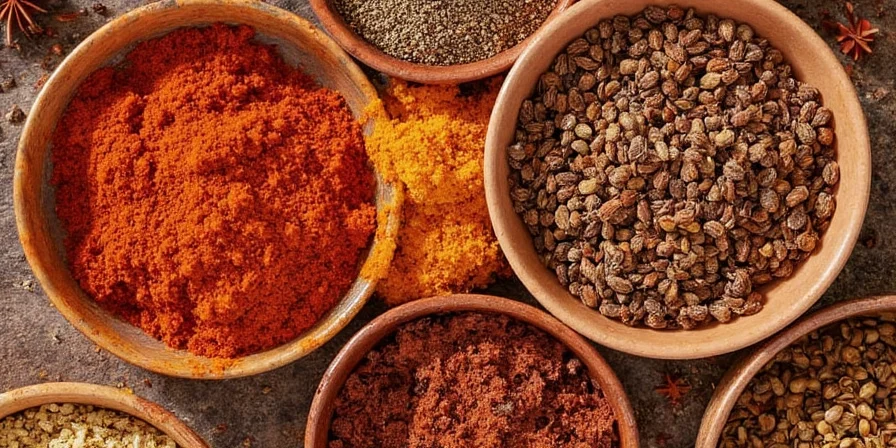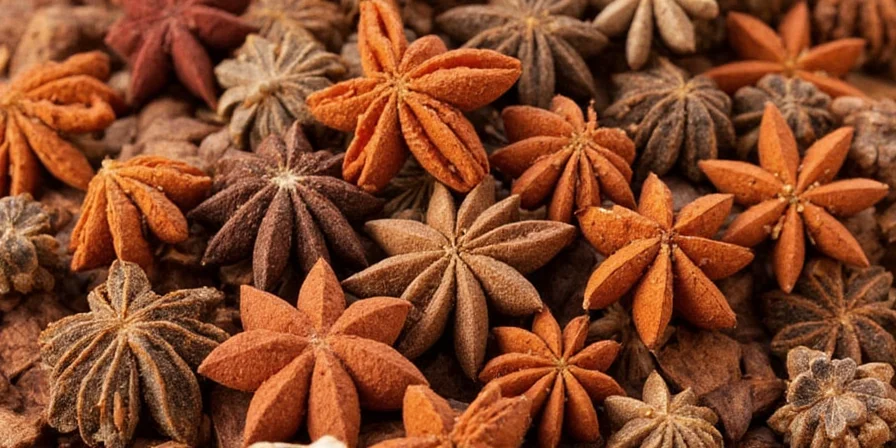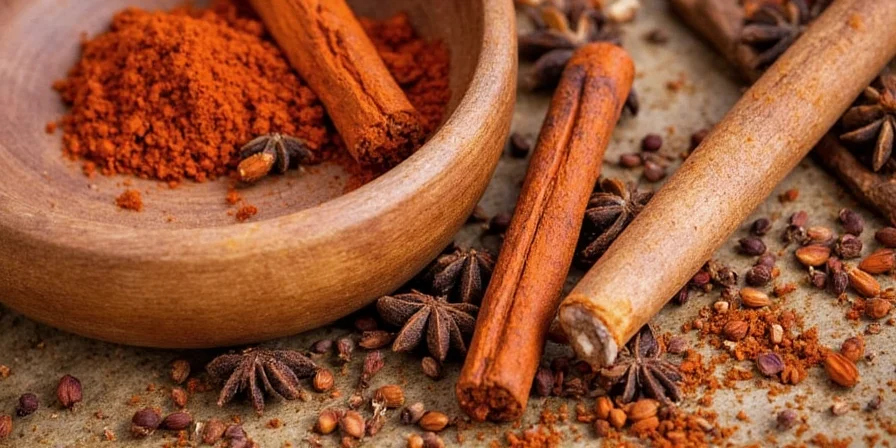
Mulling spices are a blend of warming spices traditionally used to flavor heated beverages like wine and cider. The essential ingredients include cinnamon sticks, allspice berries, whole cloves, nutmeg, star anise, ginger, and orange peel. These components create the signature aromatic, spicy-sweet profile perfect for cold weather beverages and home fragrance.
What Are Mulling Spices? Core Ingredients Explained
Mulling spices form the aromatic foundation of traditional winter beverages across many cultures. Unlike single spices, this blend combines complementary flavors that create something greater than the sum of its parts. Here's what makes up authentic mulling spices:
- Cinnamon sticks: Provide warm sweetness and woody depth
- Allspice berries: Deliver complex notes reminiscent of cinnamon, nutmeg, and clove
- Whole cloves: Add pungent earthiness that cuts through sweetness
- Freshly grated nutmeg: Contributes creamy, subtly sweet warmth
- Star anise: Brings distinctive licorice-like notes
- Fresh ginger slices: Offers bright, zesty contrast
- Orange peel (with pith removed): Adds citrus brightness and essential oils
Mulling Spices Breakdown: Ingredient Functions & Proportions
| Spice | Flavor Contribution | Optimal Proportion | Key Function |
|---|---|---|---|
| Cinnamon Sticks | Sweet, woody warmth | 2-3 sticks per gallon | Foundation of flavor profile |
| Allspice Berries | Peppery, clove-like complexity | 1 tbsp per gallon | Flavor unifier |
| Whole Cloves | Sharp, penetrating earthiness | 8-10 per gallon | Intense flavor punch |
| Nutmeg | Creamy, subtle sweetness | ¼ tsp freshly grated | Flavor smoother |
| Star Anise | Distinct licorice notes | 2-3 pods per gallon | Depth enhancer |
| Fresh Ginger | Spicy, bright zing | 3-4 slices per gallon | Palate wake-up call |
| Orange Peel | Citrus brightness | 1-2 strips per serving | Sweetness balancer |
Traditional Origins: How Mulling Spices Evolved
The practice of mulling beverages dates to medieval Europe when spices were added to wine and beer primarily for preservation. The term "mulling" derives from Old English "mullen," meaning to warm or soften. Before modern refrigeration, these spice blends helped make seasonal beverages more palatable during winter months when fresh ingredients were scarce.
Originally a practical solution, mulling spices evolved into festive tradition. Historical records show similar spice blends appearing across Europe, with Scandinavian glögg incorporating almonds and dried fruits, while German glühwein focuses on the classic spice-wine combination.
Perfect Mulling Technique: Professional Tips
Creating exceptional mulling spices requires attention to detail. Follow these evidence-based methods:
- Always use whole spices: They release flavors gradually during simmering, preventing bitterness
- Dry toast spices first: Heat in skillet 2-3 minutes to activate essential oils
- Maintain proper temperature: Simmer at 160-180°F (71-82°C) for 30-45 minutes
- Never boil: High heat causes alcohol evaporation and bitter compounds
- Add citrus last: Introduce orange slices during final 10 minutes
- Strain through fine mesh: Prevents sediment in final beverage

Versatile Applications: Beyond Traditional Wine
Mulling spices extend far beyond holiday wine. Discover these creative uses:
- Non-alcoholic beverages: Simmer with apple cider, pomegranate juice, or herbal tea
- Kitchen fragrance: Create simmer pots with spices, citrus, and water
- Baking enhancement: Add to apple butter, fruit compotes, or pie fillings
- Holiday décor: Fill decorative bowls with dried mulling spices
- Natural air freshener: Place in sachets throughout your home
- DIY body scrub: Mix with sugar and coconut oil for seasonal exfoliation
Storage & Freshness: Maximizing Shelf Life
Proper storage maintains mulling spice potency:
- Whole spices: Store in airtight containers for 12-18 months
- Ground spices: Use within 6 months for optimal flavor
- Best storage location: Cool, dark place away from heat sources
- Freshness test: Rub between fingers - strong aroma indicates freshness
- Revitalizing old spices: Briefly toast in dry skillet before use
Frequently Asked Questions
What are the essential mulling spices ingredients?
The fundamental components of traditional mulling spices include cinnamon sticks, allspice berries, whole cloves, nutmeg, star anise, ginger, and orange peel. These seven ingredients create the characteristic warm, spicy-sweet profile that defines authentic mulling blends across various cultural traditions.
Can I substitute ground spices for whole in mulling blends?
While whole spices are preferred for optimal flavor extraction, ground spices can substitute in emergencies. Use half the amount of ground spices and add during the final 10 minutes of simmering to prevent bitterness. Whole spices provide cleaner flavor and are easier to strain from finished beverages.
What's the ideal mulling spice ratio for beginners?
For a standard gallon of liquid, start with: 2 cinnamon sticks, 1 tbsp allspice berries, 8 whole cloves, 1 star anise pod, 3 ginger slices, and the peel of 1 orange. This balanced ratio creates authentic flavor without overwhelming any single note, allowing customization based on personal preference.
How do I make non-alcoholic mulling spices?
Create exceptional non-alcoholic versions by simmering the spice blend with apple cider, cranberry juice, or herbal tea for 30-45 minutes. Add sweetener to taste during the final 10 minutes. The spice infusion principles remain identical—you're simply changing the base liquid while preserving all aromatic benefits.
Why shouldn't I boil mulling spices?
Boiling causes alcohol evaporation in wine-based recipes and releases bitter compounds from spices. Maintain a gentle simmer below 180°F (82°C) to preserve volatile aromatic compounds and prevent bitterness. Proper temperature control ensures balanced flavor extraction without harsh notes.











 浙公网安备
33010002000092号
浙公网安备
33010002000092号 浙B2-20120091-4
浙B2-20120091-4